“ Lorem ipsum dolor sit amet, consectetur adipiscing elit. Maecenas et congue odio. Fusce bibendum dictum pellentesque. Praesent rhoncus ultrices dui ut facilisis. Maecenas mattis semper felis, vitae scelerisque nisi. Vestibulum porta nunc nunc, vel tristique orci tempus ut. ”
Inspired by the beauty and joy of swimming in mountain lakes, a team of Austrian researchers are credited with launching a movement back in the 1980’s that saw chlorinated swimming pools being replaced by natural swimming pools.
The idea of swimming in a pool that invited nature in rather than shutting it out with chemicals gained popularity rapidly, spreading first to Germany and then throughout Europe. Slow at first to take root in North America, natural pools are becoming more common here as well.
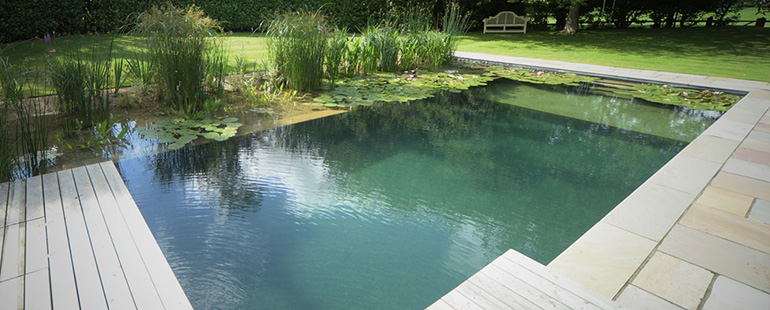
Swimming in a chlorinated pool is refreshing and enjoyable on a hot day, but pales in comparison to the experience of swimming in a natural body of water. A swim in a natural pond does not leave you with itchy red eyes, dry skin or wanting a shower, which is common after swimming in chlorinated water.
In addition to providing a beautiful backyard aesthetic, natural pools have many other advantages, including:
Mimicking the biodiversity and function of the natural environment, natural swimming ponds have separate zones for swimming and water purification. Designs can vary, as well as the recommended sizes and ratios.
Minimum pool size recommendations range from 30 to 50 square meters, but we have also seen much smaller pools that function quite well.
Depending on design, swimming zones typically comprise 50 to 70% of the total water surface area; the rest is dedicated to filtration. Water is pumped to shallow areas with abundant plant life and aggregate that act as natural filters, keeping water pure and clear.
In order for plants to thrive, pH levels should be maintained between 5.5 and 7. If the pool is well-designed and located, it should require less maintenance than a conventional pool.
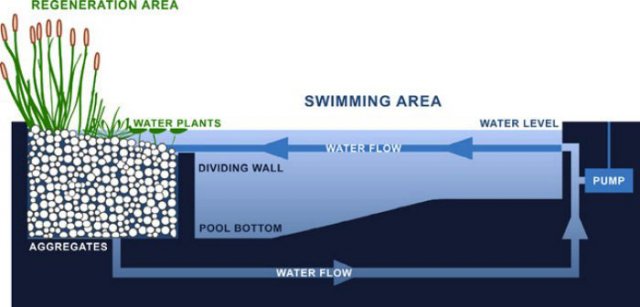 |
natural swimming pond zone diagram © ecobrooklyn.com |
According to Mick Hilleary, pond specialist and founder of Total Habitat, moving water and the natural predators of mosquito larvae that will inhabit chlorine-free water will make natural swimming pools practically mosquito free.
In addition, having a natural swimming pond in your yard can actually work to reduce the population of stinging insects, by attracting dragonflies and other natural predators of fully developed mosquitoes.
Plants, some insects, amphibians and other aquatic life are part of the ecosystem of a natural swimming pond. You end up sharing your swim with all the life (stationary and mobile) who keep your pool clean and clear.
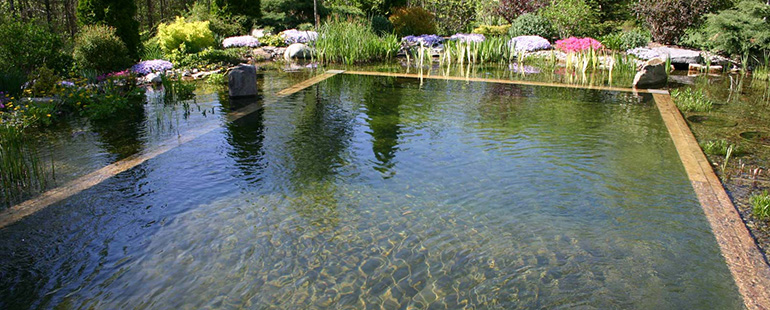
This is very appealing to many, while others may at first be a little reticent. Keep in mind – these little creatures will have no interest in you and are likely quicker swimmers than you, so relax and enjoy.
Plants: Three kinds of plants typically regulate the natural cycle of swimming ponds:
Introducing fish into your pool can be a very enticing concept, adding an entirely new dimension to the ecosystem, as well as your swimming experience. Keep in mind – including fish in your swimming pond will lead to fish excrement as well, which facilitates the growth of algae.
Additional maintenance is required with the inclusion of fish in your pond, so prepare yourself for that. For those willing to take on that additional challenge, we have found that the Pond Clinic in Ottawa, Ontario offers a good source of information on how to manage having finned swimming buddies.
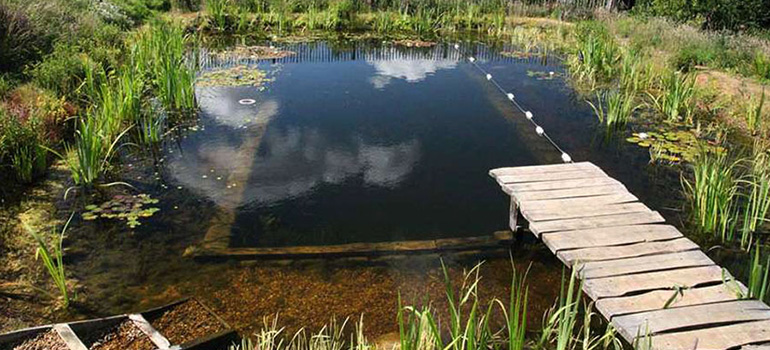
Maintenance of a natural pool falls into a completely different category than that of a chlorinated pool. Caring for a natural environment makes pond maintenance more like gardening than the chemistry you would be performing with a conventional pool. Different ponds will require different levels of maintenance; what they all have in common in this northern climate is the need to prepare for winter. Do the following towards the end of the season while the leaves are still on the trees:
Some will tell you it costs more, some will tell you it costs less. Design and complexity will be the biggest factors in determining the cost of a natural pool built by professionals when compared to a conventional chlorinated backyard pool. One great advantage natural pools have over chlorinated pools, is that no further landscaping is required as would be with a traditional in-ground pool, which can make the total finished cost of natural pools even more competitive.
Depending on the design and size, plan on spending between $40,000 and $70,000, give or take for either type.
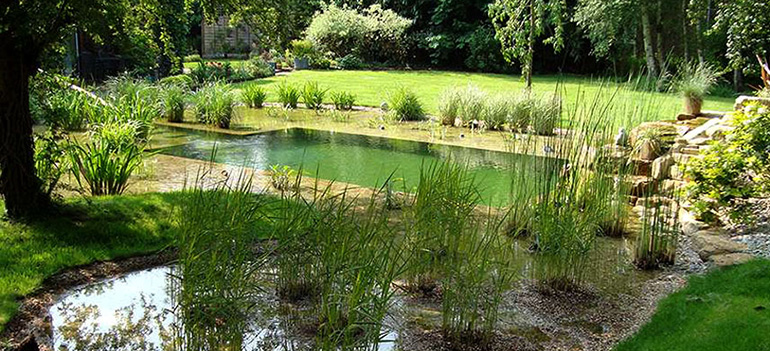
Like any swimming pool, natural pools can be a potential safety hazard and may be subject to municipal regulations. Before undertaking such a project, be sure to familiarize yourself with any legal responsibilities, as pools may require safety fencing depending on depth.
For anyone that wants to try a DIY pond, the costs will of course be much lower. This will require some research, time and effort, but that can be time well spent. And this is time in your yard that you might otherwise have spent mowing grass, planting flowers or pulling weeds.
As is always the case with DIY projects, there are lots of videos available detailing many designs and construction methods where you can find inspiration. Be sure to settle on one that is suitable for your climate, in regards to pool depth and chosen plants. The following short video is but one variation that can help you visualize the concept and steps. Good luck, and let us know if you try it!
For further reading, we found the following sites quite helpful: